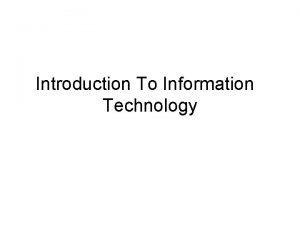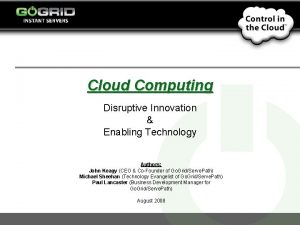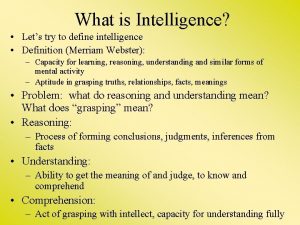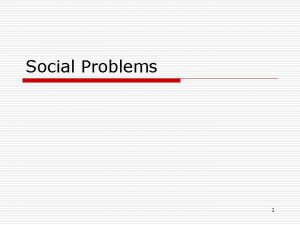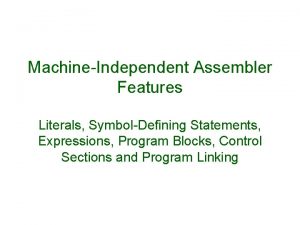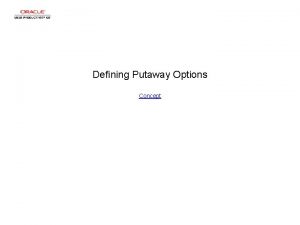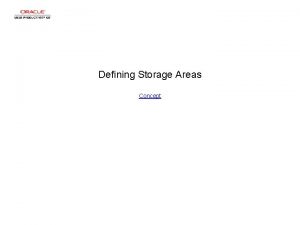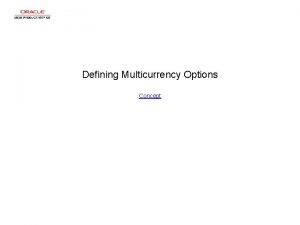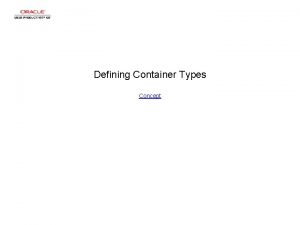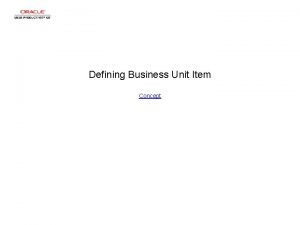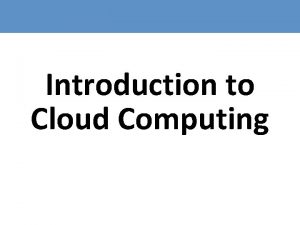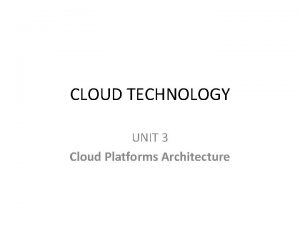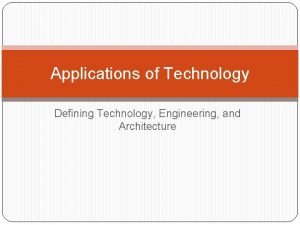CLOUD TECHNOLOGY UNIT 1 Defining a Cloud Cloud

















- Slides: 17

CLOUD TECHNOLOGY UNIT 1

Defining a Cloud • Cloud computing has become a popular buzzword • It has been widely used to refer to different technologies, services, and concepts. • It is often associated with virtualized infrastructure or hard-ware on demand, utility computing, IT outsourcing, platform and software as a service, and many other things that now are the focus of the IT industry.

Cloud computing at a glance

• The term cloud has historically been used in the telecommunications industry as an abstraction of the network in system diagrams. • It then became the symbol of the most popular computer network: the Internet. • This meaning also applies to cloud computing, which refers to an Internet-centric way of

• The Internet plays a fundamental role in cloud computing, since it represents either the medium or the platform through which many cloud computing services are delivered and made accessible. • “Cloud computing refers to both the applications delivered as services over the Internet and the hardware and system software in the data centers that provide those services. ”

Definition by NIST (National Institute of Standards and Technology) • Cloud computing is a model for enabling ubiquitous, convenient, on-demand network access to a shared pool of configurable computing resources (e. g. , networks, servers, storage, applications, and services) that can be rapidly provisioned and released with minimal management effort or service provider interaction.

• we can define three criteria to discriminate whether a service is delivered in the cloud computing style: – The service is accessible via a Web browser (nonproprietary) or a Web services application programming interface (API). – Zero capital expenditure is necessary to get started. – You pay only for what you use as you use it.

• The utility-oriented nature of cloud computing is clearly expressed by Buyya – A cloud is a type of parallel and distributed system consisting of a collection of interconnected and virtualized computers that are dynamically provisioned and presented as one or more unified computing resources based on service-level agreements established through negotiation between the service provider and consumers.

• Cloud computing is helping – enterprises, – governments, – public and private institutions, and research organizations shape more effective and – demand-driven computing systems.

• End users can have their documents accessible from everywhere and any device. (Apple i. Cloud is a service that allows users to have their documents stored in the Cloud and access them from any device users connect to it. ) • Large enterprises can offload some of their activities to cloud-based systems. (the New York Times has converteditsdigitallibraryofpasteditionsintoa. Web-friendlyformat, By renting Amazon EC 2 and S 3 Cloud resources) • Small enterprises and start-ups can afford to translate their ideas into business results more quickly, without excessive up-front costs. (Animoto is a company that creates videos out of images, music, and video fragments submitted by users. Amazon Web Services, ) • System developers can concentrate on the business logic rather than dealing with the complexity of infrastructure management and scalability. (Little Fluffy Toys is a company in London that has developed a widget providing users with information about nearby bicycle rental services. Google App. Engine )

• Another important aspect of cloud computing is its utility-oriented approach • pay-per-use” strategy. • It makes it possible to access – online storage, – rent virtual hardware, • or use development platforms and • pay only for their effective usage, • with no or minimal up-front costs.

• The three major models for deploying and accessing cloud computing environments are – public clouds, – private/enterprise clouds, and – hybrid clouds

Publicclouds • are the most common deployment models in which necessary IT infrastructure (e. g. , virtualizeddatacenters) is established by a third- party service provider that makes it available to any consumer on a subscription basis. • Such clouds are appealing to users because they allow users to quickly leverage com- pute, storage, and application services. • In this environment, users’data and applications are deployed on cloud data centers on the vendor’s premises.

Private Cloud • Large organizations that own massive computing infrastructures can still benefit from cloud computing by replicating the cloud IT service delivery model in-house. • This idea has given birth to the concept of private clouds as opposed to publicclouds. • In 2010, for example, the U. S. federal government, one of theworld’s largest consumer sof. IT spending (around $76 billion on more than 10, 000 systems) started a cloud computing initiative aimed at providing government agencies with a more efficient use of their computing facilities. • Institutions such as governments and banks that have high security, privacy, and regulatory concerns prefer to build and use their own private or enterprise clouds.

Hybrid Cloud • Whenever private cloud resources are unable to meet users’ quality-of-service requirements, hybrid computing systems, partially composedof publiccloudresources and privately owned infrastructures, arecreatedtoservetheorganization’sne eds. • These are often referred as hybrid clouds, which are becoming a common way for many stakeholders to start exploring the possibilities offered by cloud computing.

A bird’s eye View of Cloud computing

 Defining relative clauses examples
Defining relative clauses examples Relative clauses defining and non defining
Relative clauses defining and non defining Non-defining relative clauses
Non-defining relative clauses Defining relative clause meaning in telugu
Defining relative clause meaning in telugu Where kullanımı relative clauses
Where kullanımı relative clauses Non essential relative clause
Non essential relative clause Defining information technology
Defining information technology Unit 10, unit 10 review tests, unit 10 general test
Unit 10, unit 10 review tests, unit 10 general test Cloud computing disruptive technology
Cloud computing disruptive technology Intelligence vs intelligent
Intelligence vs intelligent The defining moment in greek history is the wars
The defining moment in greek history is the wars Chordate characteristics
Chordate characteristics Social problem definition
Social problem definition Romeo and juliet act 4 summary
Romeo and juliet act 4 summary Lady montague defining quotes
Lady montague defining quotes Nondefining relative clause
Nondefining relative clause Poverty definition
Poverty definition Symbol defining statements in assembler
Symbol defining statements in assembler






